DOUBLEHEADER WEEKEND: Sportbike Racing + Off-Road Racing
It’s June 12 as I write this, and I’ve been to 3 track days (should be 4 but we got snowed out!), 1 sport bike race, and 2 off-road races. Writing to you from a motel in Byer’s Colorado because I’m doing another track day tomorrow at High Plains Raceway near Byers.
I wanted to try sleeping somewhere close before hitting the track instead of driving for 2+ hours to get there. Last time I went to HPR, a couple weeks ago, I took 2 lane roads all the way from Colorado Springs to I-70. The drive was gorgeous!
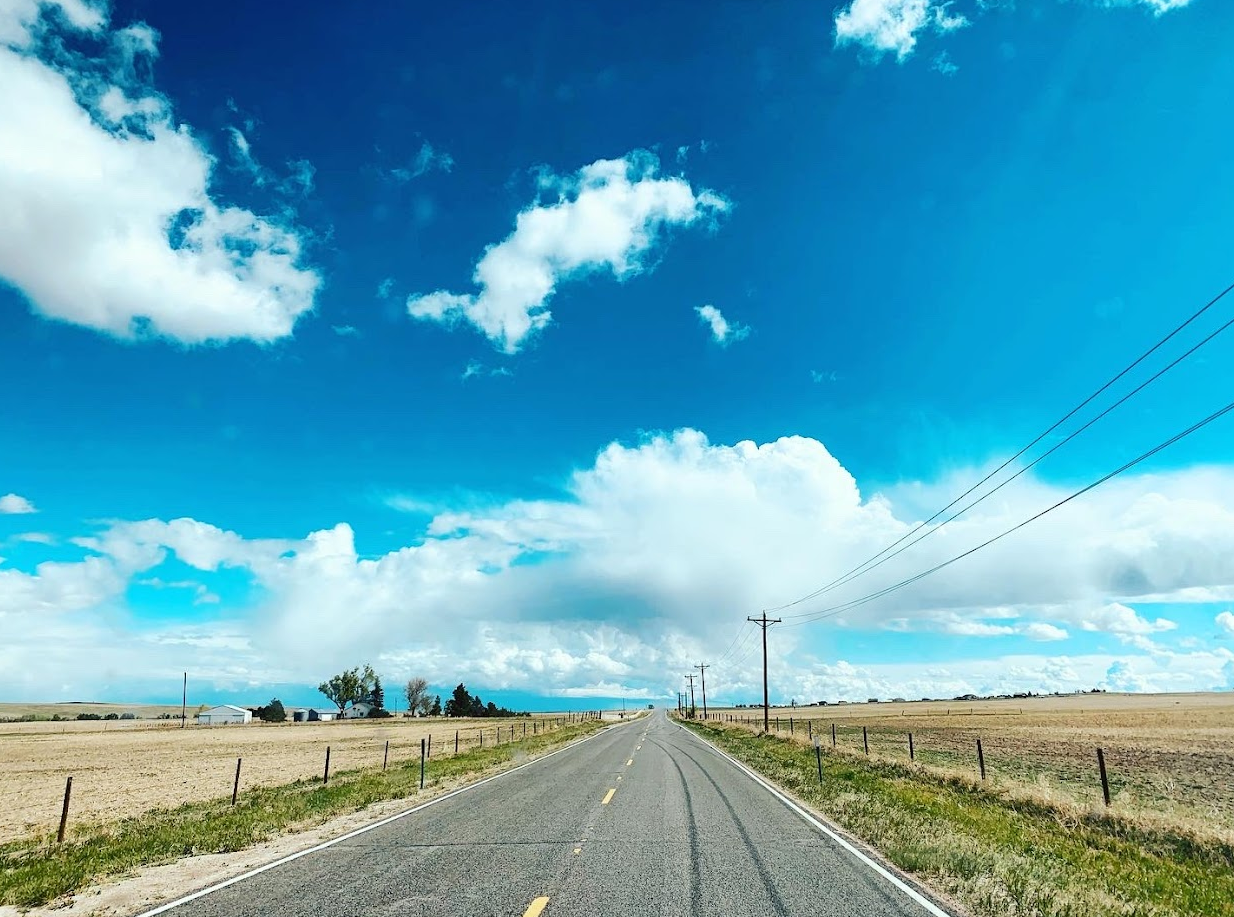
What’s all this about “track days” and how’s that different from a race? A track day is just practice. Think of it like “open swim” at a pool. There’s no competing. A race is a competition, 1st place wins and 2nd place is first loser. Races are usually timed. Sport bike racing usually happens on an asphalt track. Off-road racing happens on a motocross track or dirt trails or what might pass for a trail if you’re on a dirt bike.
There are different types of sportbike racing and different types of off-road racing. Off the top of my head, sport bike racing includes sprints, endurance racing, circuit racing, actual ROAD racing (IOMTT, Manx GP etc – this is largely a European thing, it’s too dangerous for the American public and our politicians to tolerate!), minimoto racing (small bikes on kart tracks), drag racing, supermoto, and land speed racing (on the Salt Flats and with the SoCal Timing Association).
Off-road racing is diverse too with motocross, hare-scrambles, enduro, hard enduro, trials, flat track, ice racing, and two different kinds of hill climbing.
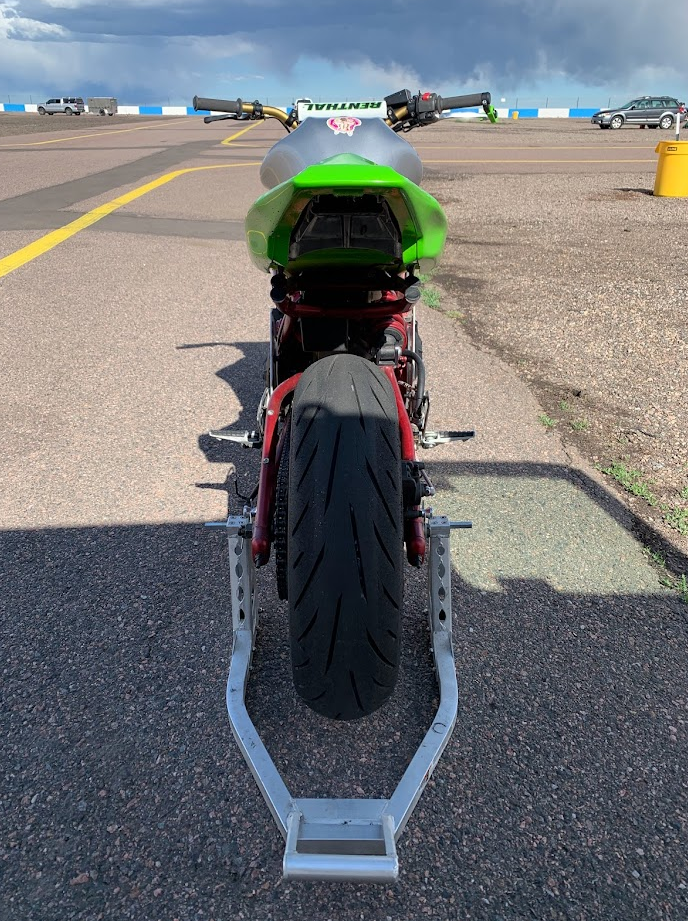
Track days are called that because you can’t just roll up to your local racetrack with your bike in the back of a truck and run it whenever you want. They only happen on certain designated days, and some planning ahead is often necessary to participate.
There are only 3 tracks in Colorado where you can ride your sporty bike: High Plains Raceway, Pueblo Motorsports Park, and Pikes Peak International Raceway. Only the first two do regular track days, and they only happen once every couple few weeks. There are a dozen or more places where you can ride a dirt bike on just about any day you have time to go ride.
Sport bike practice happens during a “track day”. Off-road practice happens wherever, for the most part whenever. It costs $100-$200+ to ride at a track day, riders must generally sign up beforehand. It’s more like free-on-public-land or $25ish to practice riding a dirt bike at a local dirt track or off-road area.
It’s not at all safe to try to ride a street bike at anything close to “race pace” on the street. In fact, “fast” street riders often show up at track days and get salty when they get passed like they’re tied to a post by women and children on 40hp bikes. Don’t get mad! Get faster! It takes a fair amount of training and experience to go fast on a sport bike at a race track.
The same is true for off-road racing, but that experience is a hell of a lot easier and less expensive to get. Oddly enough the two disciplines have a lot in common, so many sport bike racers also ride or race dirt bikes. The same isn’t true for dirt bike racers and riders. Very few of them race sport bikes. In my opinion, sport bike racing is the “deep end” of the motorcycling hobby. It’s eye-wateringly expensive, extremely specialized, dangerous as hell, requires significant planning, preparation, and effort to do at all let alone do well and represents a lifetime’s worth of stuff to learn about and learn how to do.
Ninja 650’s First Track Day
I was supposed to do a day at PPIR before going there to “race” but we got snowed out! But because things often go wrong the first time a newly built bike is ridden on track, I needed to get it to some kind of track day before the MRA event at PPIR. Enter High Plains Raceway, the track where I have the most experience and my favorite track in Colorado.
The first thing that went wrong was my shift linkage about fell off the bike. I went around a left hand corner with the linkage hanging on for dear life and bent the shifter. Knowing how aluminum is, I didn’t bother trying to bend it back. I managed to put the linkage back and used a liberal amount of loctite to keep it in place. It worked fine!
First impressions of the bike were holy crap this thing is awesome. I have no idea why more people don’t ride them on the track or race them here in the United States. There has to be some kind of history behind this because the Ninja 650/ER6N/ER6F is popular as all get out as a race bike overseas. Here most people raced the Suzuki SV650 in the twins classes. I’m not sure why that is, but it might have something to do with the first carbureted SV650s coming out in 1999 vs. the first appearance of the Ninja 650 in 2006.
It had been a while, but by the end of the day I was melting plastic with my knee again. Felt good!
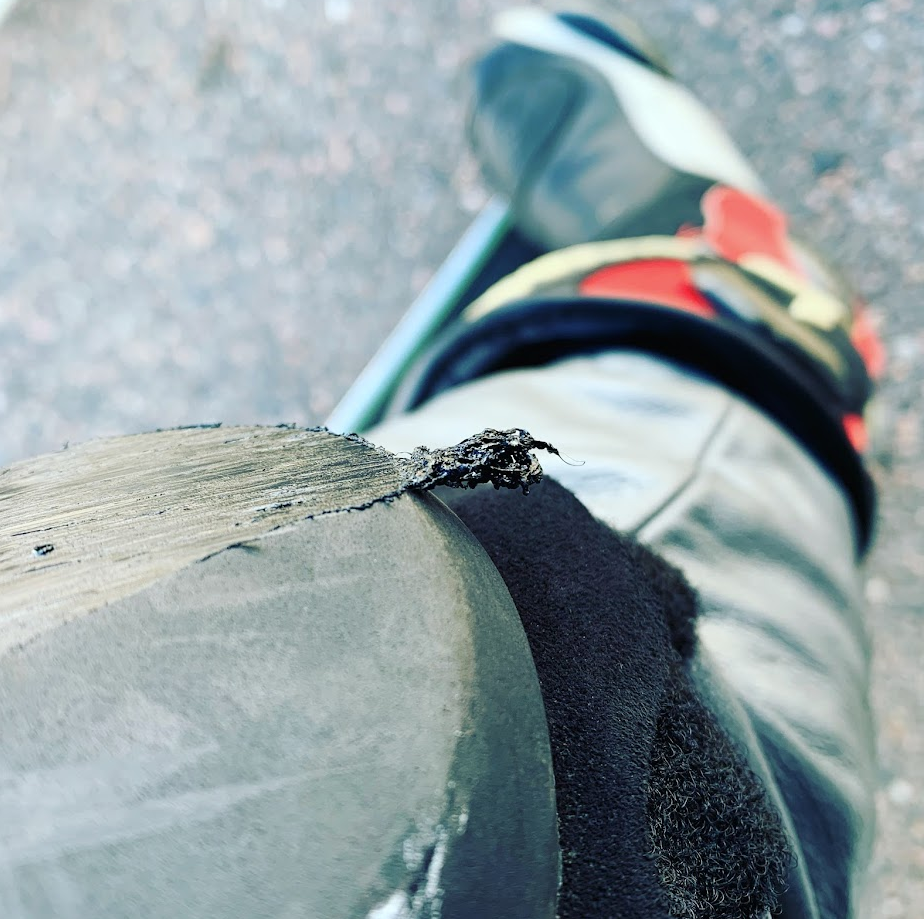
If you corner low enough, your knee hits the pavement. We use this as a sort of lean-angle gauge, hence the plastic pucks on the knees of our leather suits. The bike worked well, by the end of the day I was going what felt to me like pretty fast!
The bike is a HELL OF A LOT EASIER to ride than my old Honda RS125, which was a purpose-built Grand Prix racing bike that was more fun to look at than to ride (it was fun to ride too though!) It was twicthy, I was too big for it, but I couldn’t help myself but to race a GP bike when I was first getting into this sport. The bigger bike feels more planted and more forgiving of mistakes. It’s easier to ride than my GSXR too, which is also twitchy – not to mention a lot faster and way older – kind of like a dog I can’t quite trust yet.
Superstreet Racing with the MRA
The local race club, the MRA, has a beginner class for unlicensed would-be racers to get some instruction and try out “real racing” before spending untold sums of money on actual real racing. They call it their SUPERSTREET program. If a racer does 2 of these events, they can petition the new rider director for a novice race license, which allows the racer to be timed while racing for points and trophies AKA an actual racer.

My plan this year is to do a full year’s worth of SUPERSTREET events, which is 5 events, as a simulation of the race program I plan to run next year. The first event was at PPIR, a track I have some experience with, but that experience took place a long time ago.
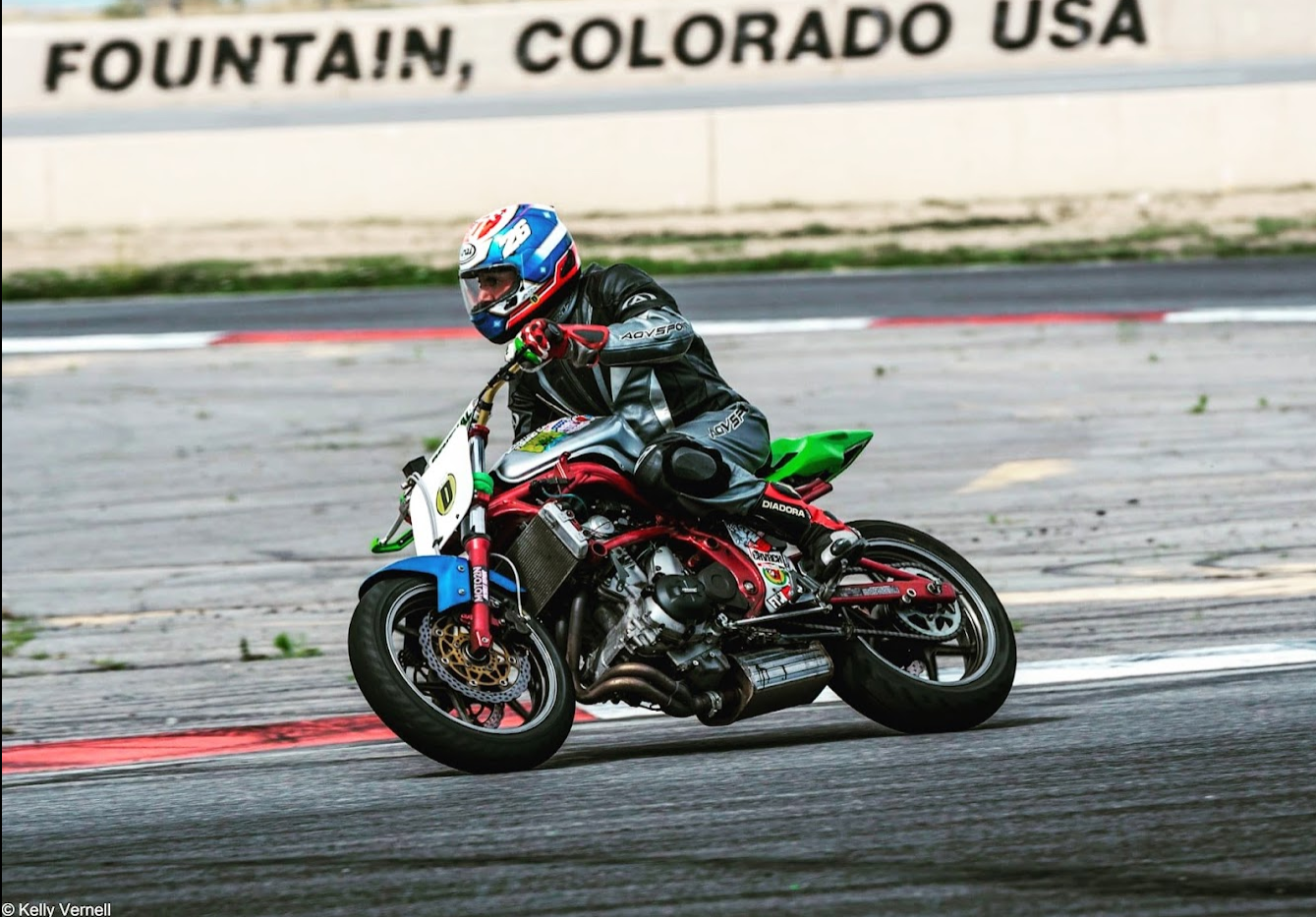
Long story short, I finished one spot behind the first place finisher, whom I couldn’t catch at all because he was on a bike with twice as much horsepower and close to the same riding level as me. This was not a bad outing for the $200 theft recovery Ninja 650 with stock suspension, stock engine, and covered in home made parts. I finished in front of many much more powerful bikes with less experienced riders on them. This was encouraging! As always the MRA people were encouraging as well, with one woman running up to me at the end of the race to ask what kind of bike I was riding! It’s all but unrecognizable as a Ninja 650, which was an effect I was hoping the bike would have on people. The guy who did the technical inspection had the same reaction… just what kind of bike is this, I can’t tell?
Off-Road Racing with CORCS, Round 4
I crashed out and ruined my helmet on the second lap. So the doubleheader weekend got cut short. BETTER LUCK NEXT TIME! THAT’S RACING!!
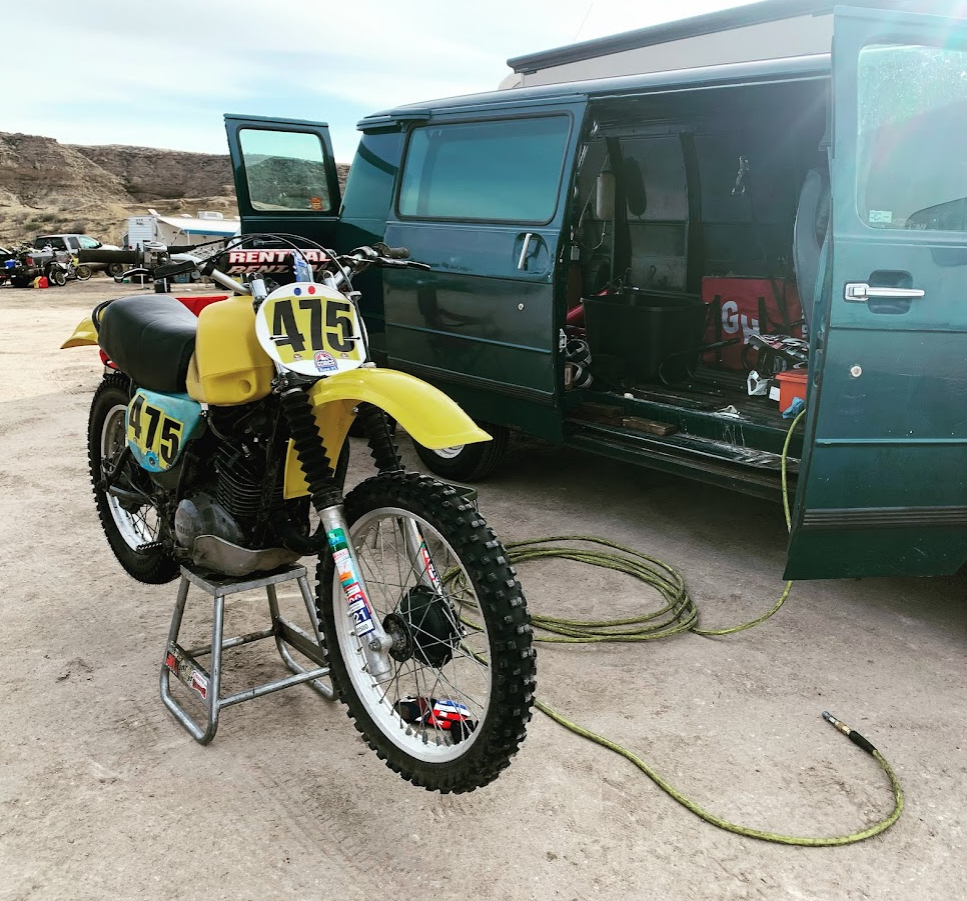
I have some thoughts on off-road racing, but they’re nothing nice, so I’ll mostly keep them to myself.
I’m behind on posting, so this post is a bit dated as of publishing it. Been busy. A LOT HAS HAPPENED SINCE THEN, it’s been about a month and a half. Since then I’ve done quite a few other events including a bunch of track days, another superstreet event, and a race school to get my novice license with the MRA. My stated plan to only do superstreet events has changed! Look for an update on all of that soon! THANKS FOR READING!